Schedule
Rambutan Crop Schedule
| Product Name | Fertilizers | |||||
|---|---|---|---|---|---|---|
| Poornima kit | NPK Grow Caps |
Humigrow Nano Powder |
ALP | Sonha-Bihan | ||
| Humic Acid | Chelated Multi-micronutrient |
PGP/PGR | ||||
| Land Reparation | Month | |||||
| Soil Treatment | Month | |||||
| Vegetative Growth | Month 1 | 1 Kit | ||||
| Month 2 | ||||||
| Month 3 | 2 Caps | 120gm | ||||
| Month 4 | ||||||
| Month 5 | 1 Kit | |||||
| Month 6 | ||||||
| Month 7 | 2 Caps | 120gm | ||||
| Month 8 | ||||||
| Month 9 | 1 Kit | |||||
| Month 10 | ||||||
| Month 11 | 2 Caps | 120gm | ||||
| Month 12 | ||||||
| Flowering | 250gm | 250gm | ||||
| Fruiting | 500gm | |||||
| Pruning | ||||||
| Total Quantity | 3 Kit | 6 Caps | 360gm | 750gm | 250gm | |
| Broadcast | |
| Top Dressing | |
| Basal Dressing | |
| Soil Application | |
| Spray | |
| * | Optional |
NOTE: For the first year donot immidietaly substitute 100% chemical fertilizer with the SIESTO GREEN products, as the soil is used to chemical fertilizer, it may affect the output. So the best way to substitute is by reducing 50% of chemical input in the first year, 25% the following 2nd year, & then another 10% by the 3rd year. After the 3rd year use synthetic fertilizer / inorganic fertilizer if their is a requirement depending on the soil health.
CROP SCHEDULE FOR CABBAGE
Sr. No.Treatment / ApplicationProductDose /AcreAPPLICATIONManagement1Vegetative – Dissolve in 20 to 200 ltr. of water as required for 1 acre of land and apply through Drip Irrigation or drench.POORNIMA KIT1 KitApply it in 1st, 5th & 9th month.It is a balanced form of nutrients that includes NPK, Zinc, Cropforce NP, Humigrow NP, and Mycorrhiza NP2Vegetative – Mix all with the required amount of water and apply through drip irrigation, flood irrigation, or drenching as per farmer’s availability.NPK + Humigrow2 Caps + 120gmApply it in 3rd, 7th & 11th month.It is a balanced form of Nutrition that includes NPK.3Flowering – Mix both in 20 – 200 liters of water as per requirement and spray it in the plants.ALP + Sonhabihan250gm + 250gmApply it during the flowering period.It is a Micronutrient and PGP that helps in Growth, Fruit set, and the quality of the produce.4Fruiting – Mix it in required amount of water and apply it to the soil near the plant roots.ALP500gmApply it during the fruiting period.It is a multi-micronutrient.
NOTE: For any kind of Deficiency, Pest attacks, or Fungal or Bacterial diseases use the products as suggested.
PEST ATTACKS, BACTERIAL, OR FUNGAL MANAGEMENT
PEST / BACTERIAL / FUNGAL
IDENTIFICATION IN CROP
SYMPTOMS
SUGGESTED PRODUCT
Fire Blight
 The plant appears as if it has been scorched by fire; watery exudate may be present in infected areas.
Indofa + Bacillus + Bacillus Subtilis
Powdery Mildew
The plant appears as if it has been scorched by fire; watery exudate may be present in infected areas.
Indofa + Bacillus + Bacillus Subtilis
Powdery Mildew
 White velvety patches on the underside of leaves; chlorotic spots on the top side of the leaves
Lifeline + Indofa + BT + Bacillus
Black Rot
White velvety patches on the underside of leaves; chlorotic spots on the top side of the leaves
Lifeline + Indofa + BT + Bacillus
Black Rot
 Purple flecks or circular lesions which are brown in the center and purple at the margin; red flecks, purple lesions, and/or brown-black rings on fruit.
Indofa + Bacillus
Purple flecks or circular lesions which are brown in the center and purple at the margin; red flecks, purple lesions, and/or brown-black rings on fruit.
Indofa + Bacillus
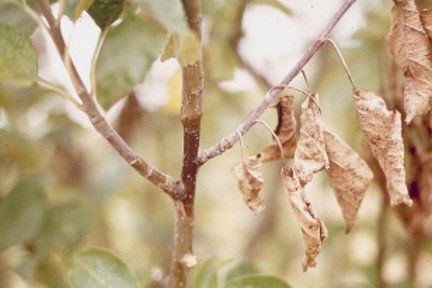 The plant appears as if it has been scorched by fire; watery exudate may be present in infected areas.
Indofa + Bacillus + Bacillus Subtilis
Powdery Mildew
The plant appears as if it has been scorched by fire; watery exudate may be present in infected areas.
Indofa + Bacillus + Bacillus Subtilis
Powdery Mildew
 White velvety patches on the underside of leaves; chlorotic spots on the top side of the leaves
Lifeline + Indofa + BT + Bacillus
Black Rot
White velvety patches on the underside of leaves; chlorotic spots on the top side of the leaves
Lifeline + Indofa + BT + Bacillus
Black Rot
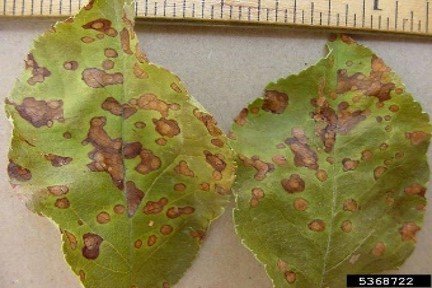 Purple flecks or circular lesions which are brown in the center and purple at the margin; red flecks, purple lesions, and/or brown-black rings on fruit.
Indofa + Bacillus
Purple flecks or circular lesions which are brown in the center and purple at the margin; red flecks, purple lesions, and/or brown-black rings on fruit.
Indofa + Bacillus
NUTRITION DEFICIENCY
NUTRIENT
IDENTIFICATION
SYMPTOMS
SUGGESTED PRODUCT
Potassium
 Old leaves are bluish green with scorched margins (brown or grey). Margins may first appear light green and later turn necrotic. Necrosis progresses from the margins inward to the midrib.
Potash Grow Caps
Sulphur
Old leaves are bluish green with scorched margins (brown or grey). Margins may first appear light green and later turn necrotic. Necrosis progresses from the margins inward to the midrib.
Potash Grow Caps
Sulphur
 Leaf growth is reduced and leaves are pale green/yellow in color. Chlorotic leaves eventually develop necrotic blotches near the margin. Symptoms start at younger leaves.
Sulphur Grow Caps
Iron
Leaf growth is reduced and leaves are pale green/yellow in color. Chlorotic leaves eventually develop necrotic blotches near the margin. Symptoms start at younger leaves.
Sulphur Grow Caps
Iron
 Symptoms always start at the youngest leaves with yellow-green, later lemon yellow, and pale yellow to whitish interveinal chlorosis. The main veins still remain green.
ALP
Manganese
Symptoms always start at the youngest leaves with yellow-green, later lemon yellow, and pale yellow to whitish interveinal chlorosis. The main veins still remain green.
ALP
Manganese
 Symptoms start at young, fully developed, and medium leaves. They show yellow-green or yellow interveinal chlorosis. Veins and adjacent tissue remain green.
ALP
Zinc
Symptoms start at young, fully developed, and medium leaves. They show yellow-green or yellow interveinal chlorosis. Veins and adjacent tissue remain green.
ALP
Zinc
 Typical symptoms of zinc deficiency are "little leaf" and "rosetting", caused by short internodes. Leaves are small, longish, and partly yellow in color. Often interveinal chlorosis is visible.
Zinc Grow Caps
Typical symptoms of zinc deficiency are "little leaf" and "rosetting", caused by short internodes. Leaves are small, longish, and partly yellow in color. Often interveinal chlorosis is visible.
Zinc Grow Caps
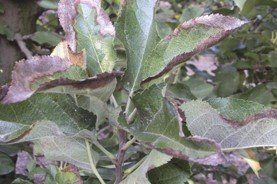 Old leaves are bluish green with scorched margins (brown or grey). Margins may first appear light green and later turn necrotic. Necrosis progresses from the margins inward to the midrib.
Potash Grow Caps
Sulphur
Old leaves are bluish green with scorched margins (brown or grey). Margins may first appear light green and later turn necrotic. Necrosis progresses from the margins inward to the midrib.
Potash Grow Caps
Sulphur
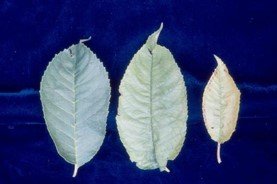 Leaf growth is reduced and leaves are pale green/yellow in color. Chlorotic leaves eventually develop necrotic blotches near the margin. Symptoms start at younger leaves.
Sulphur Grow Caps
Iron
Leaf growth is reduced and leaves are pale green/yellow in color. Chlorotic leaves eventually develop necrotic blotches near the margin. Symptoms start at younger leaves.
Sulphur Grow Caps
Iron
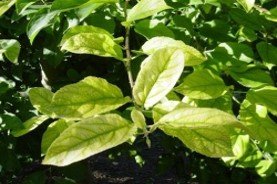 Symptoms always start at the youngest leaves with yellow-green, later lemon yellow, and pale yellow to whitish interveinal chlorosis. The main veins still remain green.
ALP
Manganese
Symptoms always start at the youngest leaves with yellow-green, later lemon yellow, and pale yellow to whitish interveinal chlorosis. The main veins still remain green.
ALP
Manganese
 Symptoms start at young, fully developed, and medium leaves. They show yellow-green or yellow interveinal chlorosis. Veins and adjacent tissue remain green.
ALP
Zinc
Symptoms start at young, fully developed, and medium leaves. They show yellow-green or yellow interveinal chlorosis. Veins and adjacent tissue remain green.
ALP
Zinc
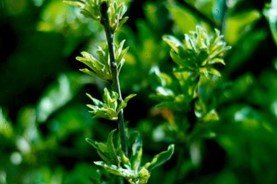 Typical symptoms of zinc deficiency are "little leaf" and "rosetting", caused by short internodes. Leaves are small, longish, and partly yellow in color. Often interveinal chlorosis is visible.
Zinc Grow Caps
Typical symptoms of zinc deficiency are "little leaf" and "rosetting", caused by short internodes. Leaves are small, longish, and partly yellow in color. Often interveinal chlorosis is visible.
Zinc Grow Caps
KEY FARMING POINTS
KEY FARMING POINTS
SCIENTIFIC NAME = Nephelium lappaceum.SOIL TYPE = It thrives in well-drained, slightly acidic soil. A sandy loam or loamy mix rich in organic matter is ideal. Avoid heavy clay or waterlogged conditions that can suffocate roots.SOIL PH = Rambutan thrives in slightly acidic, well-drained soil. The ideal pH range falls between 5 and 6.5. Soil outside this range can affect nutrient uptake and hinder growth.CLIMATE / TEMPERATURE = Rambutan thrives in hot, humid Southeast Asian climates with consistent rainfall. Ideal temperatures range from 22-30°C (72-86°F) year-round, with minimal temperature fluctuations. They struggle in cold or dry conditions.SPACING = Rambutan trees favor ample space for growth. The recommended planting distance is typically 6 meters x 6 meters (20ft x 20ft) to ensure proper air circulation, sunlight access, and room for mature tree size, ultimately promoting healthy fruit production.SEASON OF PLANTING = Rambutan enjoys consistent warmth! Southeast Asian planting typically occurs year-round due to the region's warm climate, allowing for ongoing rambutan cultivation and harvests.MANURING & FERTILIZATION = Fertilizer requirement depends on the fertility, plant age, and quality of the soil.WATER MANAGEMENT = Rambutan thrives with consistent moisture but avoid soggy roots! Deep water before flowering and during dry spells. Well-drained soil is key. Monitor dryness and adjust watering accordingly to prevent root rot, a common threat in humid areas. Mulching helps retain moisture and regulate soil temperature.HARVESTING = Rambutan requires patience! It takes 15-17 weeks after flowering for the fruit to fully mature and be ready to harvest. Harvest windows can span several weeks as fruits ripen at different rates on the same tree.YIELD = Rambutan's yield is a waiting game! Trees take 5-7 years to mature and fruit, with harvests ranging from 20 to 50 kg per tree Good management can increase yields, but remember, quality rambutans are worth the wait!
NOTE:
Recommended dosage on this crop schedule can vary depending on soil health, environmental conditions, and pest attacks.Add available forms of Phosphorus and Potash depending on the crop and crop varieties before every Transplantation.Add available forms of calcium and magnesium as per the requirement.1-acre POORNIMA KIT contains: -NPK caps = 2 capsZinc caps = 1 capCropforce Nano Powder = 120gmHumigrow Nano Powder = 120 gmMycorrhiza nano powder = 100 gm
PRECAUTIONS: -
Biofertilizer is not a chemical fertilizer hence do not mix with agrochemicals.Do not expose it to direct sunlight or heat.Use Bio-fertilizer before or after 3-4 days of use of chemical fertilizer.Please, clean the sprayer before the use of Bio-fertilizer or bio-pesticide.


